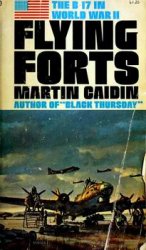As the bitter Eastern Front battles raged through 1941-42, it became increasingly clear to the German Army that their panzergrenadiers lacked organic direct fire support to deal with the increasingly potent Soviet tank and anti-tank capabilities. The obvious solution was to mount heavier guns on the Sd Kfz 251 APC. The first such vehicle was the Sd Kfz 251/10, which entered service in 1941. This vehicle - like its lighter sister the Sd Kfz 250/10 - mounted the 3.7cm (1.46in) Pak 36 anti-tank gun with its shield directly on the forward superstructure, in order to provide protection for the panzergrenadiers from Soviet armour.
By late 1941, when the 3.7cm (1.46in) Pak 36 began to be fitted in the Sd Kfz 251, its combat effectiveness was becoming marginalised by the increasingly heavy armour possessed by Soviet tanks such as the T34. During 1940-41, to prolong the combat life of the Pak 36, whether the standard gun itself or the modified weapon subsequently mounted on the Sd Kfz 251/10 APC, the Germans developed two new, improved performance rounds for the piece. The German Army introduced the first of these enhanced rounds, the 3.7cm (1.46in) Panzergrenate 40 (PzGr 40) tungsten-carbide round, in November 1940. The Pak 36 could, when firing normal rounds, penetrate 48mm (1.9in) of vertical solid armour or 36mm (1.4in) of 30-degree sloped armour at the typical combat range of 500m (547 yds) - increasingly inadequate given the level of armour protection possessed by the newest Soviet tanks. But when the Pak 36 mounted on the Sd Kfz 251/10 fired its PzGr 40 tungsten round, the weapon could penetrate a more impressive 64mm (2.5in) of vertical homogenous armour and 54mm (2.13in) of 30-degree sloped armour at the same typical combat range. However, the effectiveness of the Sd Kfz 251/10 was limited by the fact that tungsten for the PzGr 40 round always remained very scarce: the increasingly effective Allied naval blockade of Nazi-occupied Europe prevented importation of this precious resource - and the Nazi war economy could never produce a fraction of the tungsten demanded by weapons such as the sPzB 41 tapered-bore anti-tank rifle and the PzGr 40 round.
In autumn 1941 the Germans developed an even more effective 3.7cm (1.46in) round, which became available for use in the Sd Kfz 251/10 heavy weapons APC. The 3.7cm (1.46in) Stielgrenate 41 (StGr 41) stick bomb consisted of a fin-stabilised egg-shaped explosive anti-tank device that fitted over the muzzle of the gun. When the bomb, a hollow-charge HEAT (High Explosive Anti-Tank) round, hit an enemy vehicle, a cone-shaped explosive charge detonated upon impact and shot forward. In so doing it created a pressure wave of molten plasma which blasted an extremely small hole through even particularly thick armour plate. The creation of this tiny

Above: Two SS Liebstandarte Adolf Hitler Sd Kfz 251s parked in the streets of Kharkov in March 1943. Although the SS were well-equipped, there was always a shortage of these very useful vehicles, a situation which worsened as the war drew to its close.
Penetration hole then permitted the StGr 41’s main high explosive warhead to pass through the vehicle’s armour to explode inside the vehicle, killing or at least severely wounding the crew. The Pak 36 anti-tank gun fired the StGr 41 by using a blank cartridge in the breech - a method that duplicated the manner in which an infantryman’s rifle fired a rifle grenade. Though the StGr 41 possessed an unimpressive maximum combat range of just 300m (328 yds), use of this weapon increased the effectiveness of the Pak 36; at 300m the StGr 41 could penetrate an incredible 181mm (7.2in) of enemy armour - sufficient to destroy any tank then in service. Of course, the threat posed by such hollow-charge weapons led both the Axis and Allied militaries to develop spaced layered armour which tended to defuse the cone-jet created on impact by such weapons. Nevertheless, with the StGr 41 stick bomb, the Sd Kfz 251/10 remained a potent short-range anti-tank vehicle until newer and more effective anti-tank guns such as the 7.5cm (2.95in) PaK 40 and personal weapons like the Panzerfaust could reach the battlefield in significant numbers.




 World History
World History









